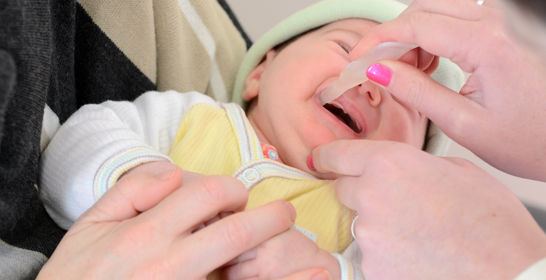
Don’t miss out on new resources
Please join us as we – together with our partners – chart new paths toward a healthier world. Sign up for our newsletter today.

The University of KwaZulu-Natal conducted the Antibiotics Prophylaxis in Breastfed HIV-Exposed Uninfected (HEU) Infants study in response to a World Health Organization (WHO) recommendation for HEU infants.
WHO guidelines indicate HEU infants receive prophylaxis antibiotics until they are weaned, and until HIV infection can be excluded. In 2013, the University of KwaZulu-Natal, with support from FLRF, began to test two hypotheses among HEU infants in South Africa:
Given the global rise in antibiotic resistances, in part due to antibiotic overuse and inappropriate indication, clinical findings from this study could lead to consequential advancements. Insights gained have the potential to:
The study was led by Professor Anna Coutsoudis and supported by the HIV Prevention Research Unit of the South African Medical Research Council and FLRF.
Daniels B, Kuhn L, Spooner E, Mulol H, Goga A, Feucht U et al. Cotrimoxazole guidelines for infants who are HIV-exposed but uninfected: a call for a public health and ethics approach to the evidence. The Lancet Global Health. 2022;10(8):e1198-e1203. DOI: 10.1016/S2214-109X(22)00120-6.
D’Souza AW, Moodley-Govender E, Berla B, Kelkar T, Wang B, Sun X, et al. Cotrimoxazole prophylaxis increases resistance gene prevalence and α-diversity but decreases β-diversity in the gut microbiome of human immunodeficiency virus-exposed, uninfected infants. Clin Infect Dis. 2020;71(11):2858–68. DOI: 10.1093/cid/ciz1186.
Daniels B, Coutsoudis A, Moodley-Govender E, Mulol H, Spooner E, Kiepiela P, et al. Effect of co-trimoxazole prophylaxis on morbidity and mortality of HIV-exposed, HIV-uninfected infants in South Africa: a randomised controlled, non-inferiority trial. Lancet Glob Health. 2019;7(12):e1717–27. DOI: 10.1016/S2214-109X(19)30422-X.
Evans C, Prendergast AJ. Co-trimoxazole for HIV-exposed uninfected infants. Lancet Glob Health. 2017;5(5):e468-e469. DOI: 10.1016/S2214-109X(17)30147-X.
Lockman S, Hughes M, Powis K, Ajibola G, Bennett K, Moyo S et al. Effect of co-trimoxazole on mortality in HIV-exposed but uninfected children in Botswana (the Mpepu Study): a double-blind, randomised, placebo-controlled trial. Lancet Glob Health. 2017;5(5): e491-e500. DOI: 10.1016/S2214-109X(17)30143-2.
Coutsoudis A, Daniels B, Moodley-Govender E, Ngomane N, Zako L, Spooner E et al. Randomised controlled trial testing the effect of cotrimoxazole prophylaxis on morbidity and mortality outcomes in breastfed HIV-exposed uninfected infants: study protocol. BMJ Open. 2016;6(7):e010656. DOI: 10.1136/bmjopen-2015-010656.
Coutsoudis A, Coovadia HM, Kindra G. Time for new recommendations on cotrimoxazole prophylaxis for HIV-exposed infants in developing countries? Bull World Health Organ. 2010;88(12):949-950. DOI: 10.2471/BLT.10.076422.
WHO. Consolidated guidelines on the use of antiretroviral drugs for treating and preventing HIV infection: recommendations for a public health approach – 2nd ed. 2016. Available here.
WHO. Guidelines on post-exposure prophylaxis for HIV and the use of co-trimoxazole prophylaxis for HIV-related infections among adults, adolescents and children: recommendations for a public health approach: December 2014 supplement to the 2013 consolidated guidelines on the use of antiretroviral drugs for treating and preventing HIV infection. 2014. Available here.
Check here to search for open access research findings published by our partners.